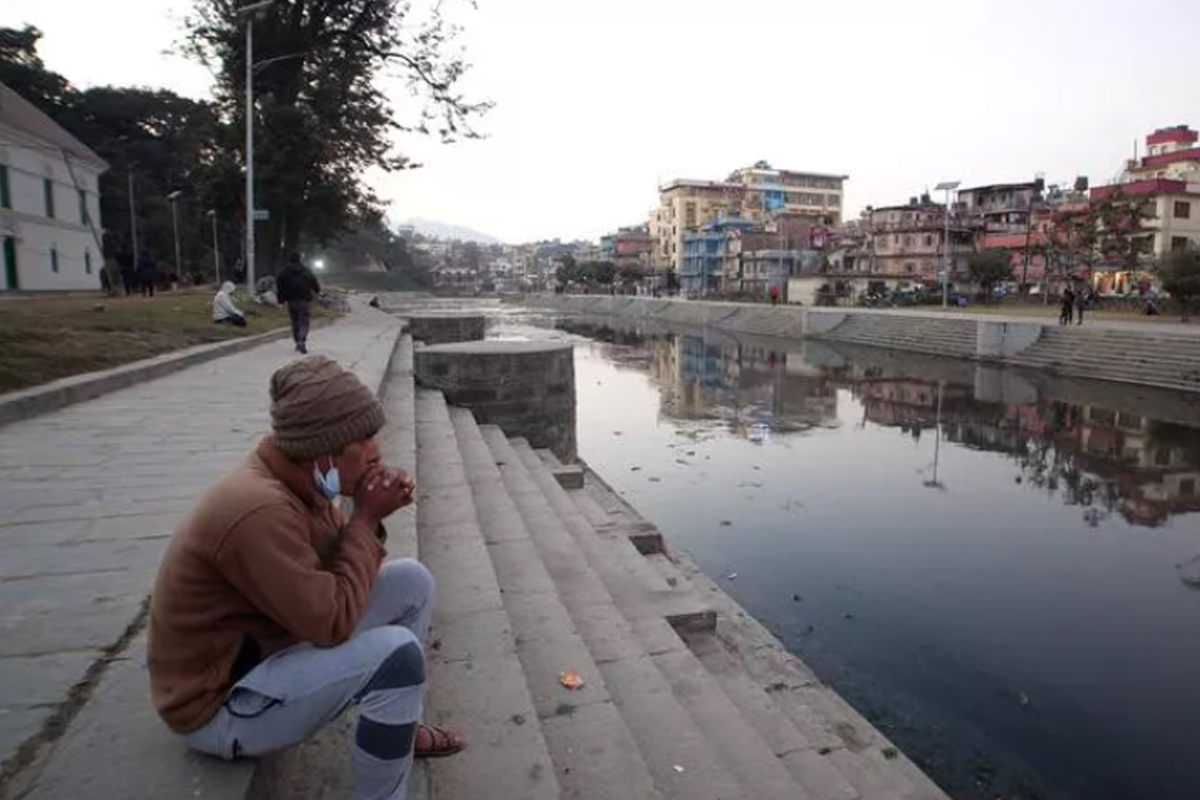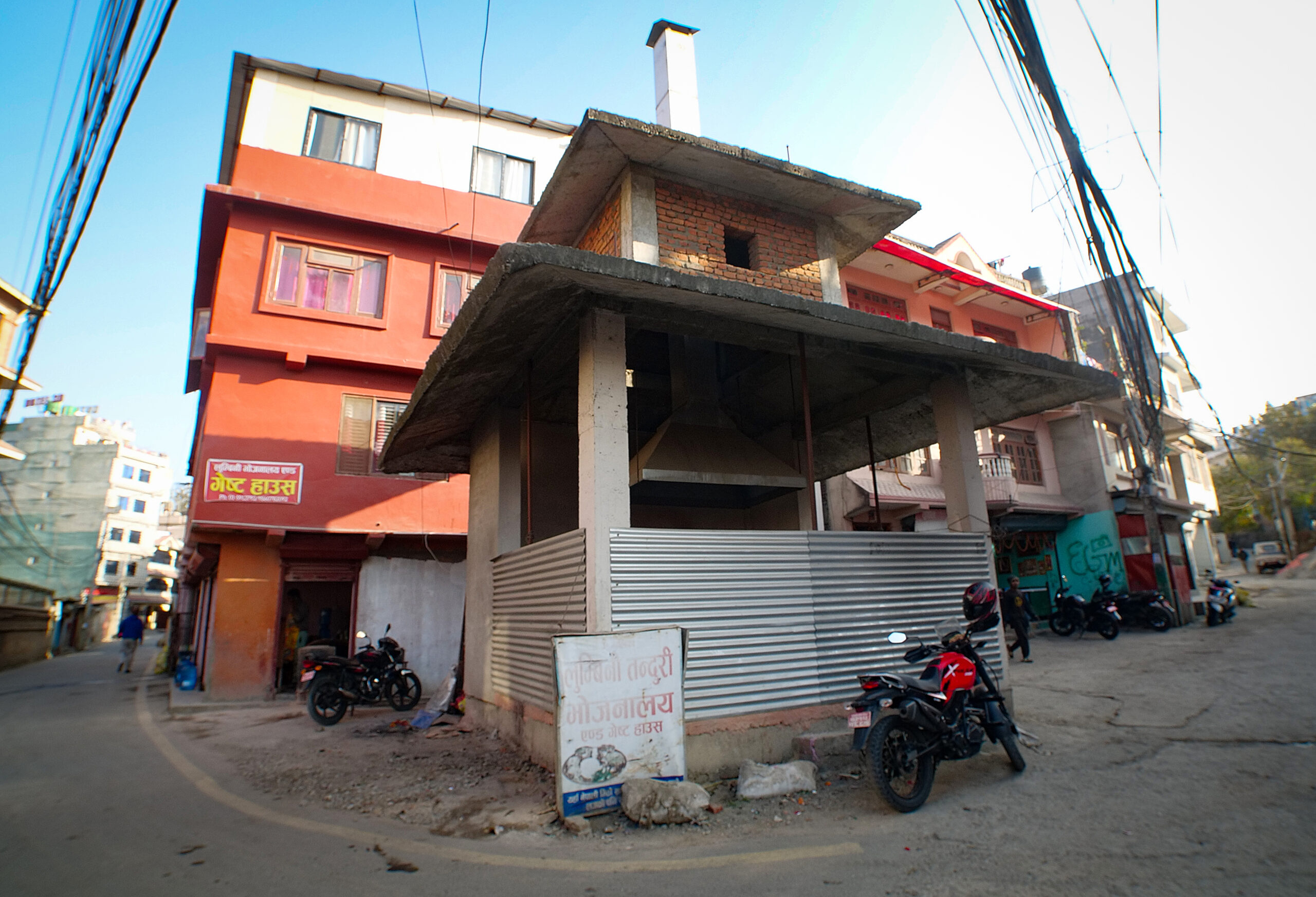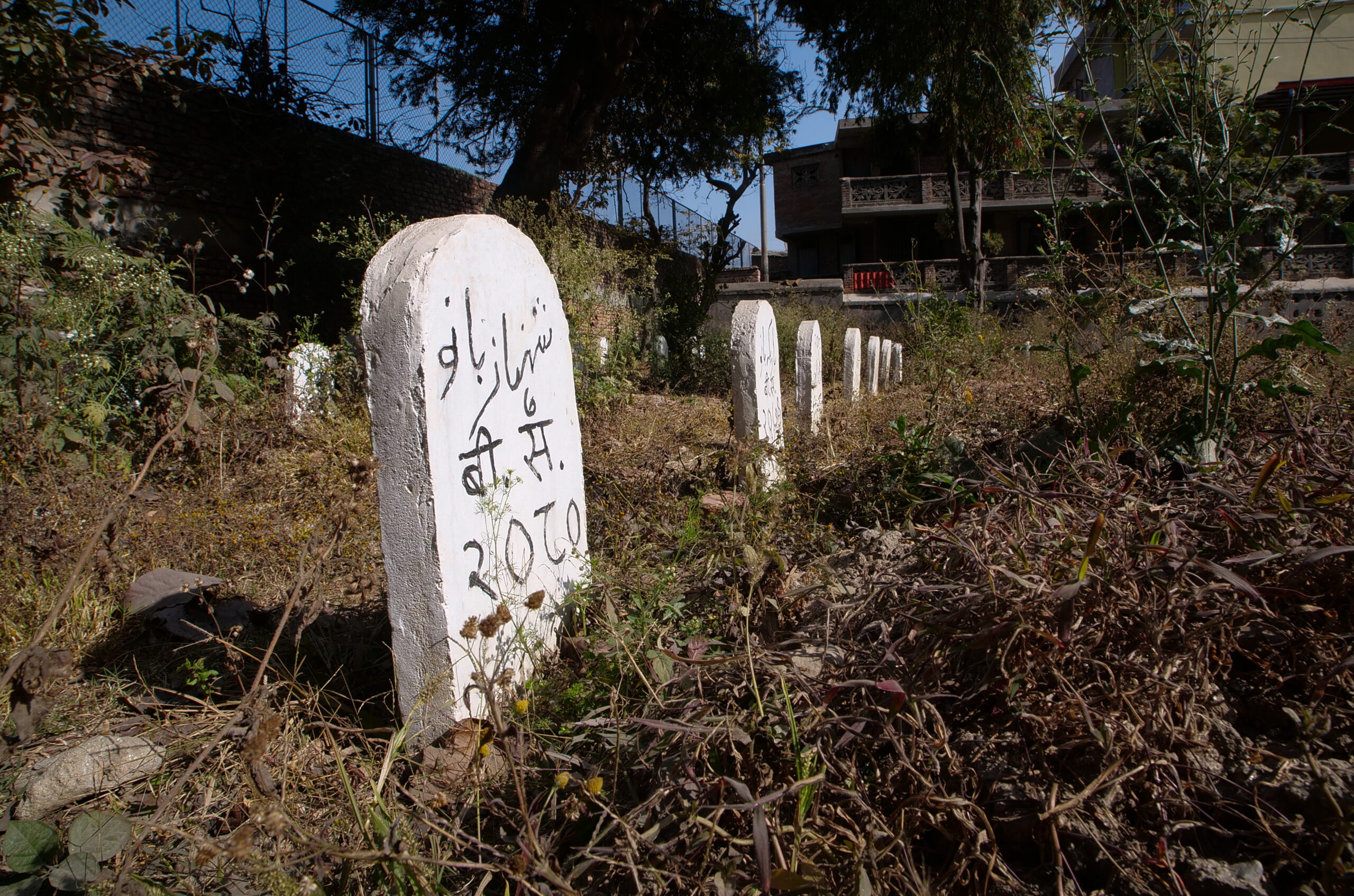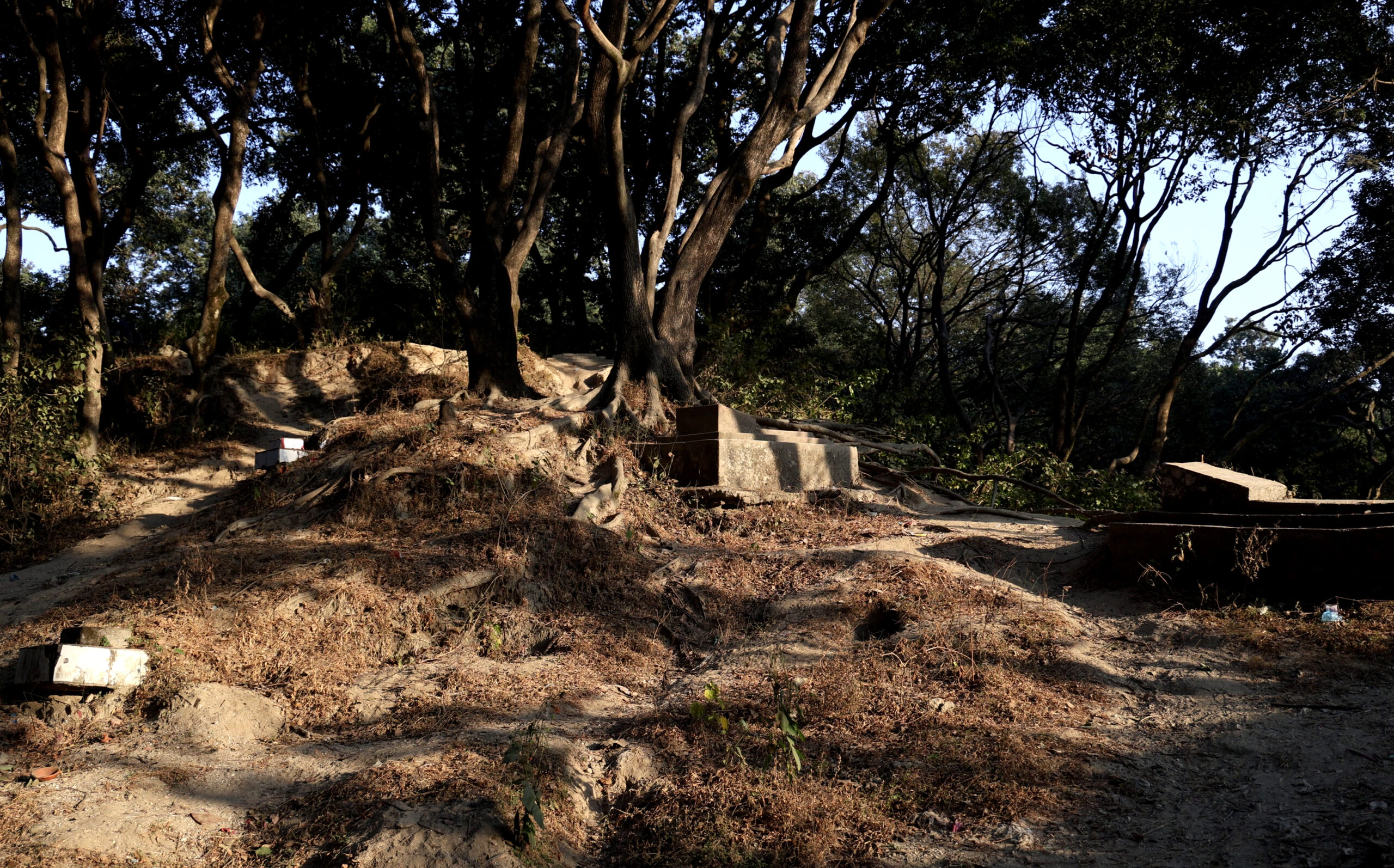Life after death
Funerary spaces for cremations and burials are shrinking rapidly for Nepal’s minorities

By: Alisha Sajapati,
Kathmandu’s Muslim community have a burial site near Swayambhu. Because of the lack of space there, the Jame community has added soil 3m thick on top of the older graves to make another layer of tombs. The 0.5 hectare cemetary is used by both the Jame and Kashmiri sects, and was granted as a token by the Rana regime in exchange for part of the mosque property property in the Jamal area.
“We haven’t encountered issues since we added the elevation, but we are also hopeful that the government will listen should any problems arise in the future,” says Abdul Shamim, of Kathmandu’s Jame Masjid.
The Kashmiris are seeking another burial space near Kathmandu, and the community foresees potential friction with local communities. “It is the teaching of Allah that we have to bury, not cremate, so there are two options: find space to bury or let the body flow down the river,” explains Mohammed Ashraf of the Kashmiri Masjid.
The Kirat community in Kathmandu has a bigger dilemma: opt for cremation or burial. While a majority of families now use the electric crematorium at Pashupati for funerals, not everyone in the community is for it and many want traditional burials.

“But there is simply no space for a cemetary,” says Ganesh Rai, a journalist.
Shleshmantak, Pashupati where children too young to be cremated used to be buried, as were Hindu ascetics and later the Kirat and Christian population of Kathmandu.
In 1998, the Supreme Court imposed a ban on all burials within the premises of Pashupati, a UNESCO heritage site. The ban is temporarily lifted under certain conditions, including the use of concrete for gravestones, it was reinstated in 2011. This means ethnic groups that have recently migrated to Kathmandu are having problems for funerals.
The Kirat people, for instance, say they have a right to bury their dead as tradition dictates, just as the increasing Christian population in the Valley who are also lobbying the government for a cemetary near Pashupati. But the lack of burial space means many Christians in Kathmandu use the electric cremation and place the ashes in urns in their churches.

Hindus make up 81.9% of Nepal’s 30 million population with nearly 2.4 million in Kathmandu Valley alone. The Valley also has 84,000 Christians, 48,000 Kirat and 32,500 Muslims, according to the 2021 census. There is just one electric crematorium and a critical shortage of burial sites for this population.
Before 1778, when the Valley’s kingdoms had their own kings and population was small, funerals for all communities were mangeable. But with the explosive urbanisation and the Valley’s population now exceeding 3.5 million, even the Hindu cremation sites are congested and face local opposition.
The Newa people of Kathmandu had cremation sites in Shobha Bhagwati, Chabahil, Maitidevi, Shankhamul, Nakkhu and Balkumari, but these have fallen into disuse, partly due to the absence of funeral pyres and with the expansion of settlements nearby.
In Gangahiti in Chabahil there are two cremation spaces for the Sakya and Dangol clans. Now, there is a tandoori restaurant right behind where the cremation site used to be.
In Gangahiti in Chabahil there are two cremation spaces for the Sakya and Dangol clans where members have been cremated for centuries, but it is now overrun by new neighbourhoods.
Nirmala Karmacharya has lived in Gangahiti for over 20 years, and did not even know that there was a cremation site nearby when her family built their house.

“You never know when there is a creamation, and we have to shut all the windows to keep out the smell,” she says. “The government should have regulated cremation sites better.”
During the Covid-19 pandemic in 2020, Mayor Bidya Sundar Shakya built a gas crematorium in Gangahiti, but there are still frequent clashes between mourners and residents.
“We understand their pain, but there is already a crematorium in Pashupati. Why do they have to come here?” asks Karmacharya.
In 2023, Gangahiti residents won the case in Patan High Court restricting the clans from using the cremation site. Now, there is a tandoori restaurant right behind where the cremation site used to be.

Public litigator Sanjay Adhikari says that Gangahiti residents were well aware of the cremation site before they purchased the property, and it was unfair to the Shakya and Dangol communities to lose their ancestral creamation site.
The pressure on Pashupati’s cremation area has grown because other traditional sites along river banks have been overrun by the city’s expansion and are closed.
The few ghats at Pashupati on the banks of Bagmati cannot keep up with demand for cremations from Kathmandu’s growing population. Most days, there are long queues of distraught relatives waiting for their turn to perform the last rites. The nearby electric crematorium usually only has one furnace running and there are long waits there, too. State officials have a VIP platform for their cremations and do not have to wait.

The pressure on Pashupati’s cremation area has also grown because other traditional sites along river banks have been overrun by the city’s expansion and are closed.
“Most come to Pashupati because it is the holiest place, and also its relatively efficient service. It is not feasible to go looking for cremation pyres elsewhere,” says Rewati Raman Adhikari of Pashupati Development Trust.
Mrigasthali forest is regarded as a sacred Hindu site where Lord Shiva came to attain salvation, and burials are only allowed for babies and certain ascetic sects, and funerals for other religious groups is restricted here.
“The burial ban also has an ecological aspect to it, we want to preserve these forests, so we don’t want concrete grave stones in the jungle,” adds Adhikari. “Burials of other religions within their sacred site is also not acceptable to Hindus. We must learn to co-exist peacefully.”
When even Hindus find it increasingly difficult to cremate their dead, the majoritarian mindset means that other religions are left to fend for themselves. Despite a secular Constitution, a glaring example of prevailing injustice is that Nepal’s minorities face exclusion even after death.
source: CIJ

Ukraine debates mobilising more men to fight Russia after two years of w…

‘He’s lost my vote’: Many Irish Americans turn against Biden over Gaza w…

Coffee’s in danger: Can Vietnam’s Robusta save it from climate change?

Remembering El Rayes Zakaria, Egypt’s folk music revolutionary giant

Sarfaraz Khan: A Mumbai maidan cricketer’s long journey to India Test cap

Will a four-day work week solve Germany’s labour shortage?

In Gaza, babies have no more nappies, milk, as Israeli bombing continues


_IexFvHDnJG_1urjr23cbc2xmfjdfkhogqnplirv17ojd7gjhqtmn9sdyfprxyhoaot4gqcg_Qq7ENM3tUI_a1ojzdpjqxxkdm7fgvazdvrja8nmdnnzcxw9inymunu8vv8yrno3wraidd4m.png)




_RTfGJE0GtA_oymi0xskufs0gha5ivfxs6t9snibasq6z1xcxddak2fxzomcnrqlgfxtpfpn_5PfC2Bi2jG_skbdcytgz9ub1kklsrru85yydkearmdkrkgdxhymlqemcmznyyya5l7i9mof.png)



Comment